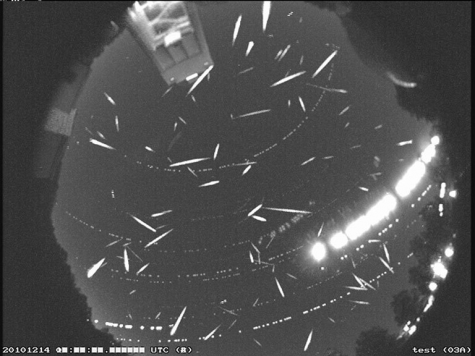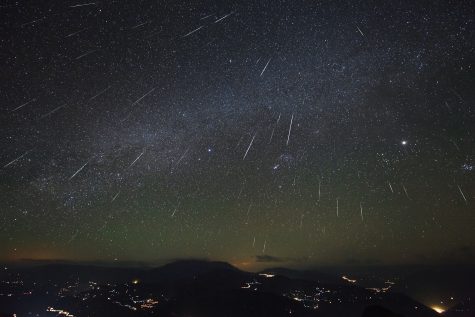Starry Night
December 7, 2020

The annual Geminid meteor shower can be viewed anywhere around the world, and special equipment is not needed to view this spectacular event. The 2020 Geminids will be especially eye-catching because the sky will be darker thanks to the new moon. This meteor shower will be active from December 4th to the 17th, but is expected to peak around the 13th or 14th. The best time to watch the Geminids will be at 2am local time according to EarthSky authors Bruce McClure and Deborah Byrd, because “that’s when the shower’s radiant point – the point in our sky from which the meteors seem to radiate – is highest in the sky.” The Geminids get their name from the Gemini constellation, where they appear to radiate from.
According to NASA, the Geminids appear annually as Earth passes through a massive trail of debris left by a weird object named 3200 Phaethon. Meteors happen when pieces of space matter enter Earth’s atmosphere and burn up in a streak of light and they’re commonly known as shooting stars because of this. Phaethon was first thought to have been an asteroid but is now classified as an extinct comet. Extinct comets don’t have ice like regular comets because of one too many close encounters with the sun.

The best way to view a meteor shower is to find a dark area away from other sources of light, after 20-30 minutes your eyes will adjust to the darkness but make sure to keep your phones turned off! Lying flat on the ground is the best way to see more of the sky. Unfortunately, people living in downtown areas of cities will most likely not see anything. Light pollution makes it difficult to view the Geminids but those living in suburbs will have a better chance of seeing the meteor shower.
The Geminids first appeared in the mid-1800s but weren’t noteworthy because there were only 10-20 meteors per hour. The meteor shower grows stronger every year and they peak at 120 meteors per hour now. At first no one knew where the Geminids came from but after NASA’s Infrared Astronomy Satellite spotted 3200 Phaethon, astronomer Fred Whipple made the connection after he realized both followed nearly identical orbits. The Geminids tend to appear yellow, green, or blue in color and go by quickly so make sure you’re on the lookout!
